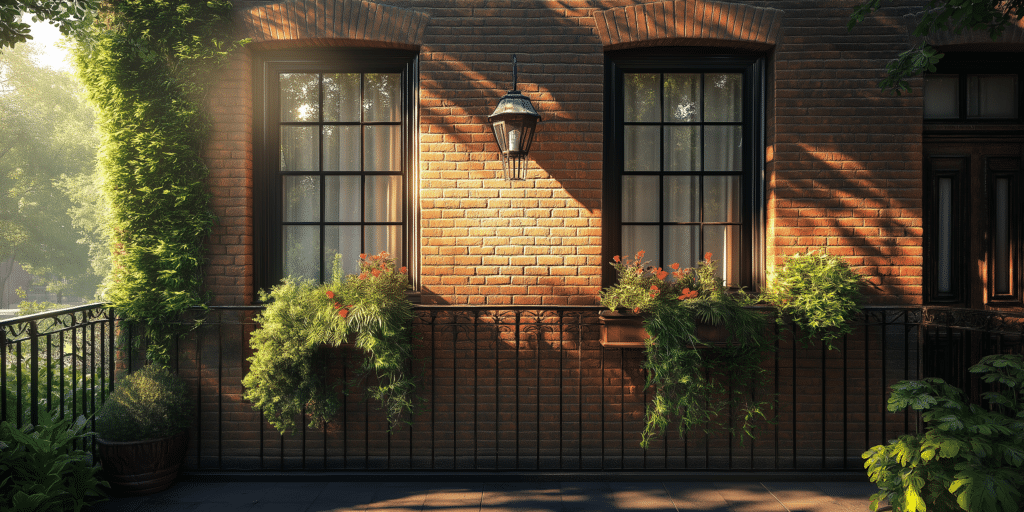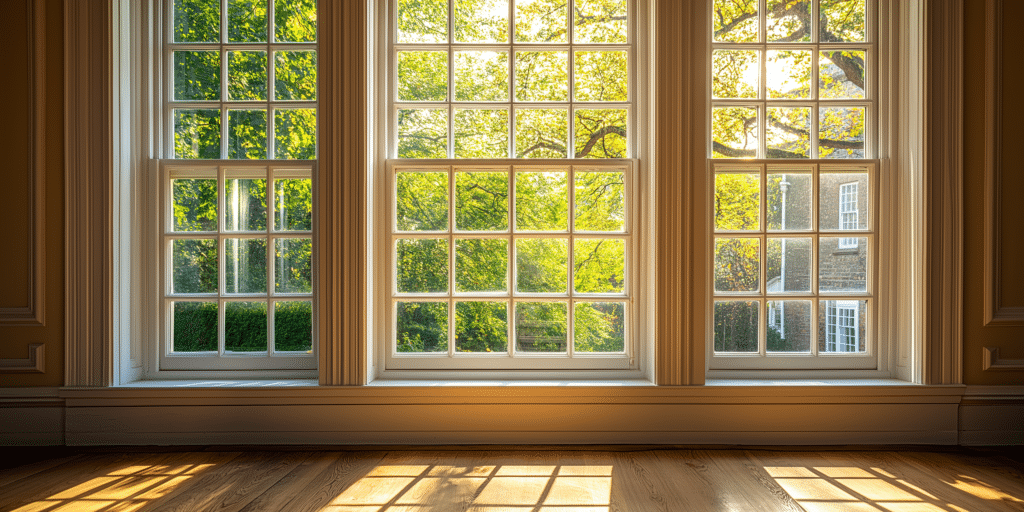Understanding Sash Window Glass Types: Which One is Right for You?

Several factors come into play when selecting the appropriate sash window glass types for your home. These include energy efficiency, thermal insulation, and cost-effectiveness. The most common types of glass for sash windows include double glazing, triple glazing, and Low-E glass.
Each option offers distinct advantages depending on the climate, property type, and your energy-saving goals. For example, Low-E glass contains a special coating designed to reflect heat back into the room, reducing energy loss while maintaining natural light transmission. Research from the National Renewable Energy Laboratory (NREL) shows that Low-E glass can reduce energy consumption by up to 30%, making it an ideal choice for homes looking to reduce their carbon footprint and lower energy costs.
Double Glazing for Sash Windows: Is It Worth the Investment?
Upgrading to double-glazed sash windows significantly improves a property’s thermal efficiency. According to the Energy Saving Trust, double glazing can reduce annual heating costs by up to 20%. Additionally, double glazing helps reduce external noise, making it ideal for urban homes. For those seeking superior insulation, triple glazing can provide even better thermal performance, offering additional protection against heat loss.
However, it’s essential to consider the cost difference. While triple glazing can offer better insulation, it comes with a higher upfront investment. Homeowners should evaluate whether this additional cost is justified based on their local climate and long-term energy-saving goals.
Low-E Glass: Maximising Energy Efficiency in Sash Windows
Low-E glass, or low emissivity glass, is designed to reflect heat into the room while allowing natural light to pass through. Studies from the National Renewable Energy Laboratory suggest that homes with Low-E glass can reduce energy consumption by 25% to 30%, which translates into significant cost savings over time. This type of glass also blocks harmful UV rays, protecting furniture and interiors from fading.
Triple Glazing for Maximum Insulation: A Good Idea for Sash Windows?

Triple glazing is the top choice for homeowners seeking the best thermal insulation. With an additional pane and insulating gas like argon or krypton, triple-glazed windows can reduce heat loss and energy bills by up to 50%. However, this comes with higher installation costs, so homeowners should consider their specific climate and energy-saving goals when opting for triple glazing.
Acoustic Glass for Sash Windows: Reducing Noise Pollution
Acoustic glass can reduce noise by up to 45 decibels for homes in high-traffic areas, offering a quieter living environment. It is often combined with other glazing types, like Low-E or triple glazing, to provide both soundproofing and energy efficiency. While it may not offer the same level of insulation as other types of glazing, its noise reduction capabilities make it invaluable for homes in urban settings.
Single vs. Double vs. Triple Glazing: Which Should You Choose?
The choice between single, double, and triple-glazing depends on several factors, including energy efficiency, noise reduction, and budget. Single glazing offers minimal insulation, while double glazing can reduce heat loss by 20% to 30%. For colder climates, triple glazing may provide even more substantial savings, reducing energy costs by up to 50%.
Sash Windows in Historic Properties: Glass Choices and Conservation Considerations

Due to conservation regulations, replacing sash windows in historic properties can be challenging. Many listed buildings require sash windows to maintain their original appearance, but specialised options like heritage glass can provide modern energy efficiency while preserving historical aesthetics. In some cases, secondary glazing may also be installed to improve insulation without altering the building’s exterior.
Energy-Efficient Glazing Options: What Works Best for Sash Windows?
When choosing energy-efficient glazing for sash windows, homeowners can select from options such as Low-E glass, double glazing, and triple glazing. These options not only improve thermal performance but can also reduce a home’s carbon footprint. Energy-efficient sash windows, particularly those with A++ ratings, can offer significant savings on energy bills and improve the property’s overall value.
Understanding U-Values and Energy Ratings for Sash Window Glass
The U-value of window glass measures the rate of heat transfer, with lower values indicating better insulation. For sash windows, U-values can range from 1.2 W/m²K for double glazing to 0.8 W/m²K for triple glazing. Homeowners should aim for lower U-values to reduce heat loss and improve energy efficiency.
Cost Considerations: Balancing Initial Investment with Long-Term Savings

Upgrading sash windows to more energy-efficient glass types can be a significant investment, but the long-term savings on energy bills make it worthwhile. For instance, installing double glazing can reduce heating costs by up to 20%, while Low-E glass can result in savings of up to 30%. Although triple glazing costs more initially, it can reduce energy bills by up to 50%, making it an attractive option for colder climates.
Final Thoughts: Choosing the Right Glass for Your Sash Windows
Choosing the right glass for your sash windows is a significant decision that impacts your home’s energy efficiency, comfort, and value. According to data from Historic England, the right window upgrades can increase property value by up to 10%, especially when energy-efficient solutions are installed. Whether you opt for Low-E glass for superior energy savings, triple glazing for maximum insulation, or acoustic glass for noise reduction, each option offers distinct advantages tailored to different needs.
Understanding your home’s specific requirements, including its location, climate, and budget, is key to making an informed choice. By investing in the right glass, homeowners can enjoy both immediate comfort and long-term financial benefits.




